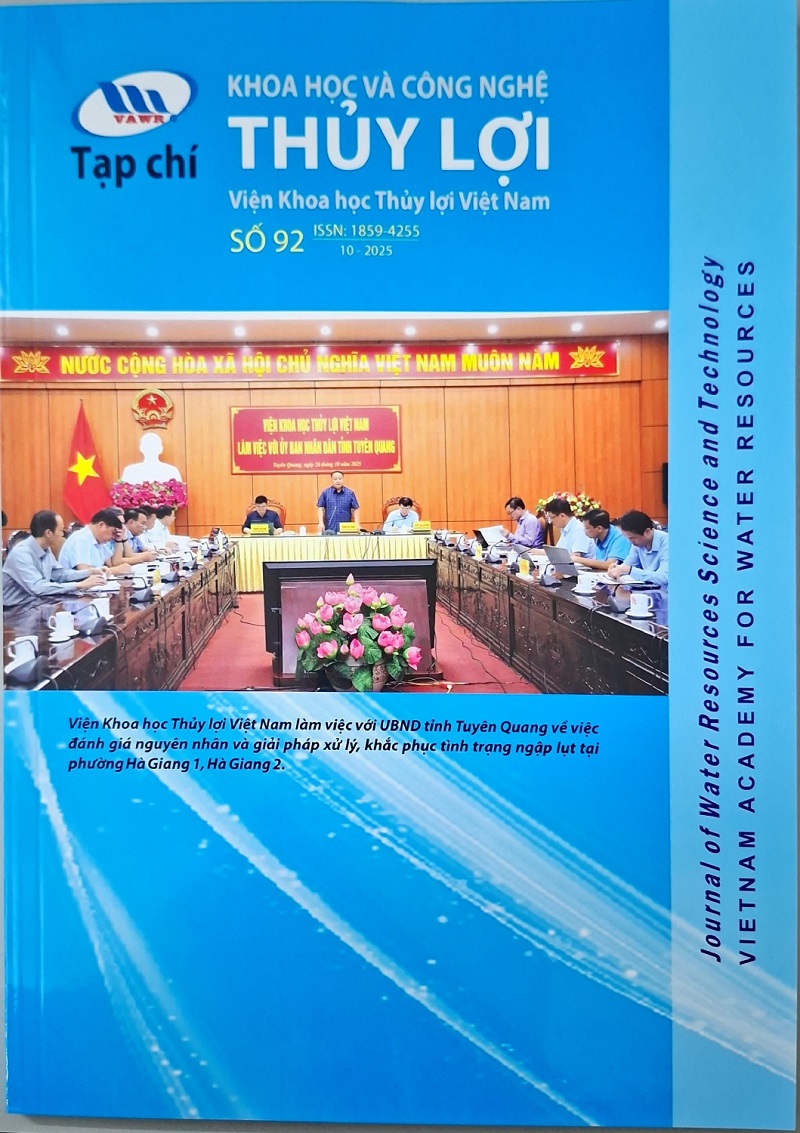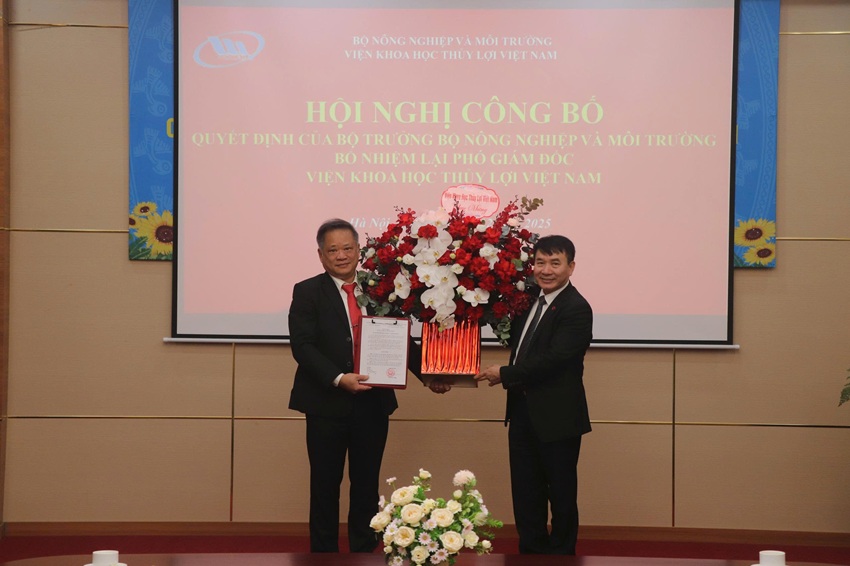Landslide Susceptibility Mapping Based on the Combination of Bivariate Statistics and Modified Analytic Hierarchy Process Methods: A Case Study of Tinh Tuc Town, Nguyen Binh District, Cao Bang Province, Vietnam
23/11/2021Tinh Tuc town, Cao Bang province, Vietnam is prone to landslides due to the complexity of its climatic, geological, and geomorphological conditions. In this study, in order to produce a landslide susceptibility map, the modified analytical hierarchy process and landslide susceptibility analysis methods were used together with the layers, including: landslide inventory, slope, weathering crust, water storage, geology, land use, and distance from the road. In the study area, 98% of landslides occurred in highly or completely weathered units. Geology, land use, and water storage data layers were found to be important factors that are closely related with the occurrence of landslides. Although the weight of the “distance from the road” factor has a low value, the weight of layer “< 100 m” has a high value. Therefore, the landslide susceptibility index very high is concentrated along the roads. For the validation of the predicted result, the landslide susceptibility map was compared with the landslide inventory map containing 47 landslides. The outcome shows that about 90% of these landslides fall into very high susceptibility zones.
1. Introduction
2. General State of the Region
3. Materials and Methods
4. Results
5. Conclusion
References:
[1] E. E. Brabb, “Innovative approaches to landslide hazard and risk mapping,” Proc. of 4th Int. Symp. on Landslides, pp. 307-324, 1984.
[2] H. An, T. T. Viet, G. Lee, Y. Kim, M. Kim, S. Noh, and J. Noh, “Development of time-variant landslide-prediction software considering three-dimensional subsurface unsaturated flow,” Environmental Modelling & Software, Vol.85, pp. 172-183, 2016.
[3] H. An, M. Kim, G. Lee, and T. T. Viet, “Survey of spatial and temporal landslide prediction methods and techniques,” Korean J. of Agricultural Science, Vol.43, No.4, pp. 507-521, 2016.
[4] H. R. Pourghasemi, H. R. Moradi, and S. M. Fatemi Aghda, “Landslide susceptibility mapping by binary logistic regression, analytical hierarchy process, and statistical index models and assessment of their performances,” Nat. Hazards, Vol.69, No.1, pp. 749-779, 2013.
[5] T.-T. Yu, T.-S. Wang, and Y.-S. Cheng, “Analysis of Factors Triggering Shallow Failure and Deep-Seated Landslides Induced by Single Rainfall Events,” J. Disaster Res., Vol.10, No.5, pp. 966-972, doi: 10.20965/jdr.2015.p0966, 2015.
[6] L. Ayalew, H. Yamagishi, H. Marui, and T. Kanno, “Landslides in Sado Island of Japan: Part II. GIS-based susceptibility mapping with comparisons of results from two methods and verifications,” Engineering Geology, Vol.81, No.4, pp. 432-445, 2005.
[7] T. L. Saaty, “The Analytical Hierarchy Process,” McGraw Hill, 1980.
[8] P. Aleotti and R. Chowdhury, “Landslide hazard assessment: summary review and new perspectives,” Bulletin of Engineering Geology and the Environment, Vol.58, No.1, pp. 21-44, 1999.
[9] K. Miyamoto, “Numerical simulation of landslide movement and Unzen-Mayuyama disaster in 1792, Japan,” J. Disaster Res., Vol.5, No.3, pp. 280-287, 2010.
[10] T. V. Tran, G. Lee, H. An, and M. Kim, “Comparing the performance of TRIGRS and TiVaSS in spatial and temporal prediction of rainfall-induced shallow landslides,” Environ. Earth Sci., Vol.76, Article No.315, pp. 1-16, doi: 10.1007/s12665-017-6635-4, 2017.
[11] T. V. Tran, M. Alvioli, G. Lee, and H. U. An, “Three-dimensional, time-dependent modeling of rainfall-induced landslides over a digital landscape: a case study,” Landslides, Vol.15, No.6, pp. 1071-1084, doi: 10.1007/s10346-017-0931-7, 2018.
[12] T. V. Tran, G. Lee, T. M. Thu, and H. U. An, “Effect of Digital Elevation Model Resolution on Shallow Landslide Modeling Using TRIGRS,” Natural Hazards Review, Vol.18, No.2, doi: 10.1061/(ASCE)NH.1527-6996.0000233, 2016.
[13] T. V. Tran, V. H. Hoang, H. D. Pham, and G. Sato, “Use of Scoops3D and GIS for the Assessment of Slope Stability in ThreeDimensional: A Case Study in Sapa, Vietnam,” Proc. of the Int. Conf. on Innovations for Sustainable and Responsible Mining, 2020.
[14] H. A. Nefeslioglu, E. A. Sezer, C. Gokceoglu, and Z. Ayas, “A modified analytical hierarchy process (M-AHP) approach for decision support systems in natural hazard assessments,” Comput. Geosci., Vol.59, pp. 1-8, 2013.
[15] N. T. Kien, I. K. Fomenko, and V. V. Pendin, “Application of the method of analysis hierarchies (AHP) under the regional landslide
hazard assessment (for example area North-West of Laocai in Vietnam),” Geoinformatika, No.2, pp. 53-66, 2017.
[16] C. J. van Westen, “GIS in landslide susceptibility zonation: A review, with examples from the Andes of Colombia,” M. F. Price and D. I. Heywood (Eds.), “Mountain Environments & Geographic Information Systems,” pp. 135-165, Taylor & Francis, 1994.
[17] A. M. S. Pradhan, A. Dawadi, and Y. T. Kim, “Use of different bivariate statistical landslide susceptibility methods: A case study of Kulekhani watershed, Nepal,” J. of Nepal Geological Society, Vol.44, pp. 1-12, 2012.
[18] M. L. Suzen and V. Doyuran, “A comparison of the GIS based landslide susceptibility assessment methods: multivariate versus bivariate,” Environmental Geology, Vol.45, No.5, pp. 665-679, 2004.
[19] I. K. Fomenko, “Method of assessment of landslide,” Doctor of Science thesis, 318pp., 2014.
[20] D. J. Varnes, “Landslide hazard zonation: a review of principles and practice,” Int. Association of Engineering Geology Commission on Landslides and Other Mass Movements on Slopes: UNESCO, 1984.
[21] R. Soeters and C. J. van Westen, “Slope instability recognition, analysis and zonation,” A. K. Turner and R. L. Schuster (Eds.), “Landslide, investigation and mitigation,” pp. 129-177, Transportation Research Board, National Research Council, 1996.
[22] N. Q. Thanh, “Research, supplement, develop and publish maps of natural disasters in the Vietnamese mainland on the basis of research results from 2000 to present,” National Research, Code: KC 08.28/11-15, 2015.
——————————————————————————————————————
Nguyen Trung Kien∗,†, The Viet Tran∗∗, Vy Thi Hong Lien∗, Pham Le Hoang Linh∗∗∗, Nguyen Quoc Thanh∗
∗Institute of Geological Sciences, Vietnam Academy of Science and Technology
Lane 84, Chua Lang Street, Dong Da, Hanoi, Vietnam
†Corresponding author, E-mail: kien.mgri@gmail.com
∗∗Department of Civil Engineering, Thuyloi University, Hanoi, Vietnam
∗∗∗Institute of Ecology and Works Protection, Hanoi, Vietnam
[Received November 30, 2020; accepted January 28, 2021]
Journal of Disaster Research Vol.16 No.4, 2021
Ý kiến góp ý:









